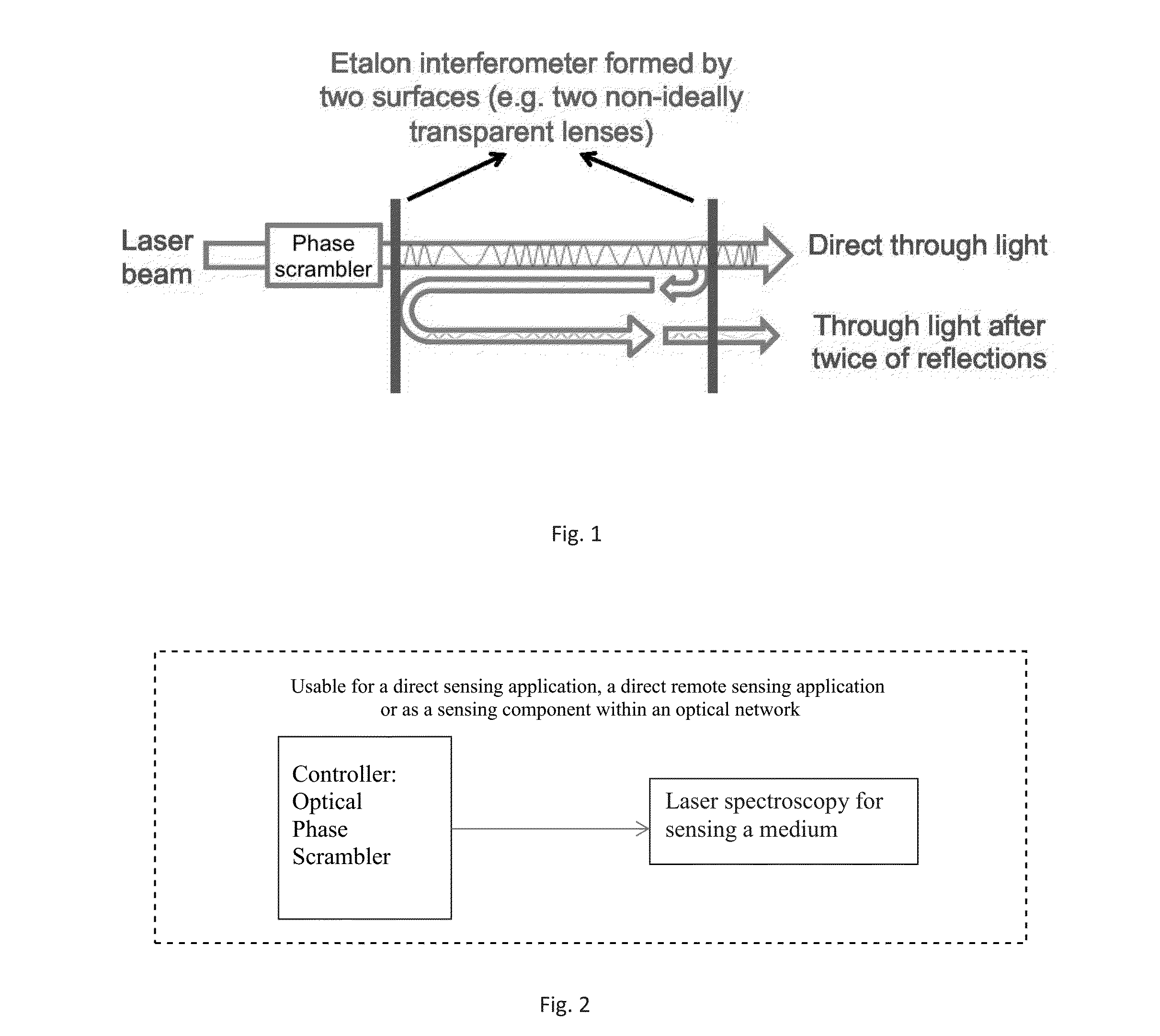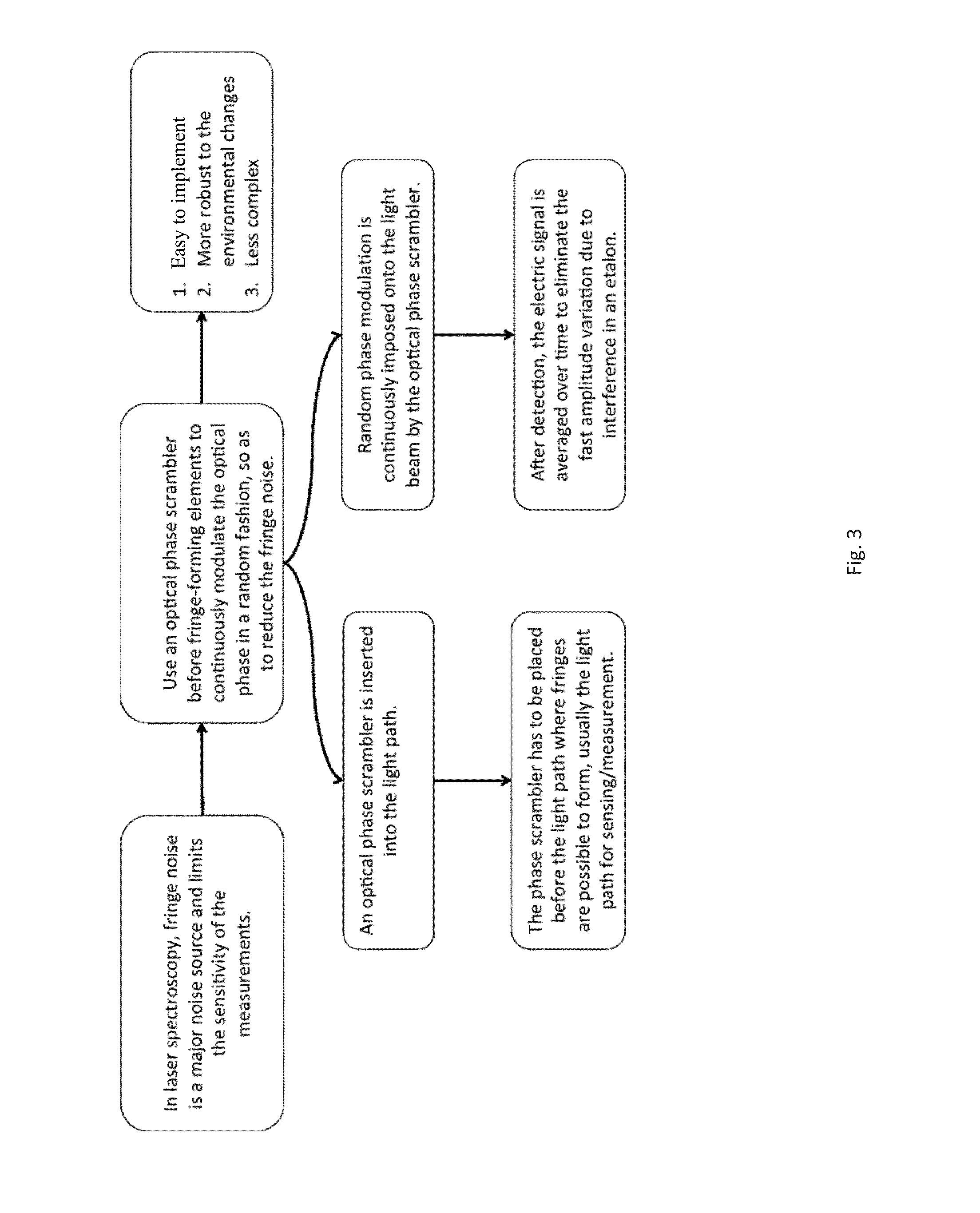Fringe Reduction in Laser Spectroscopy
a laser spectroscopy and fringe reduction technology, applied in the field of optics, can solve the problems of limiting the sensitivity of laser spectroscopy measurement of trace gas concentration, affecting the accuracy of laser spectroscopy, so as to reduce the speed of amplitude variation or fringe noise
- Summary
- Abstract
- Description
- Claims
- Application Information
AI Technical Summary
Benefits of technology
Problems solved by technology
Method used
Image
Examples
Embodiment Construction
[0014]The invention provides an optical phase scrambler that is placed next to a laser source to randomly modulate the optical phase. Since the optical phase is continuously changing in a random fashion, at the output of an etalon interferometer formed in the optical path, the two or more components in the interference always have certain time delay between each other, resulting in a random phase different between each other. Therefore, after interference, the fringe amplitude varies randomly as well. Then at the receiver side, the fringe noise is greatly reduced after it is averaged over time.
[0015]FIG. 1 shows application of the inventive fringe reduction in a laser spectroscopy situation.
[0016]A phase scrambler is placed between the laser beam light source and Etalon interferometer. The Etalon interferometer is formed by two surfaces, e.g., two non-ideally transparent lenses. The interferometer produces a direct light output and a light output after two reflections inside the Eta...
PUM
 Login to View More
Login to View More Abstract
Description
Claims
Application Information
 Login to View More
Login to View More - R&D
- Intellectual Property
- Life Sciences
- Materials
- Tech Scout
- Unparalleled Data Quality
- Higher Quality Content
- 60% Fewer Hallucinations
Browse by: Latest US Patents, China's latest patents, Technical Efficacy Thesaurus, Application Domain, Technology Topic, Popular Technical Reports.
© 2025 PatSnap. All rights reserved.Legal|Privacy policy|Modern Slavery Act Transparency Statement|Sitemap|About US| Contact US: help@patsnap.com



